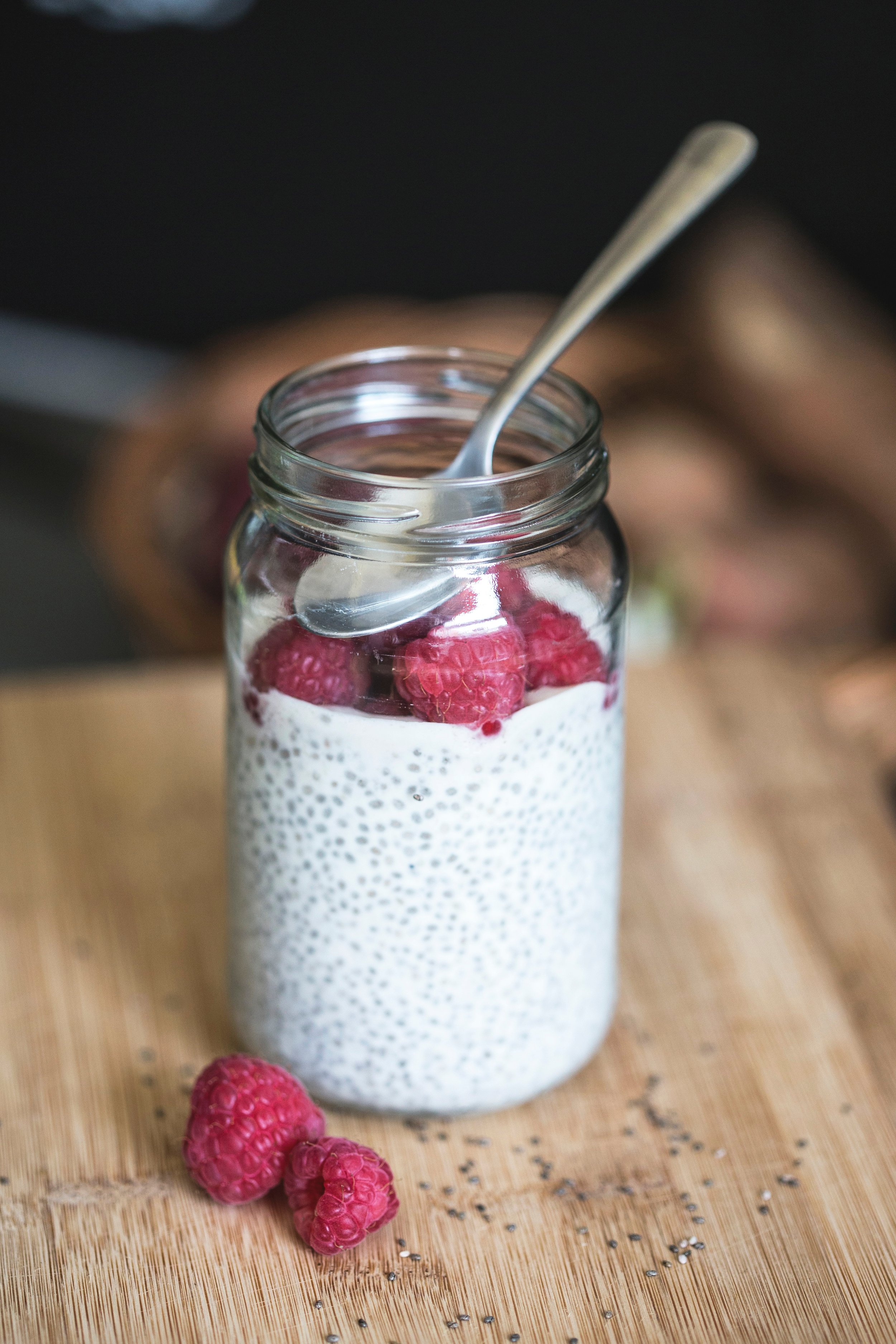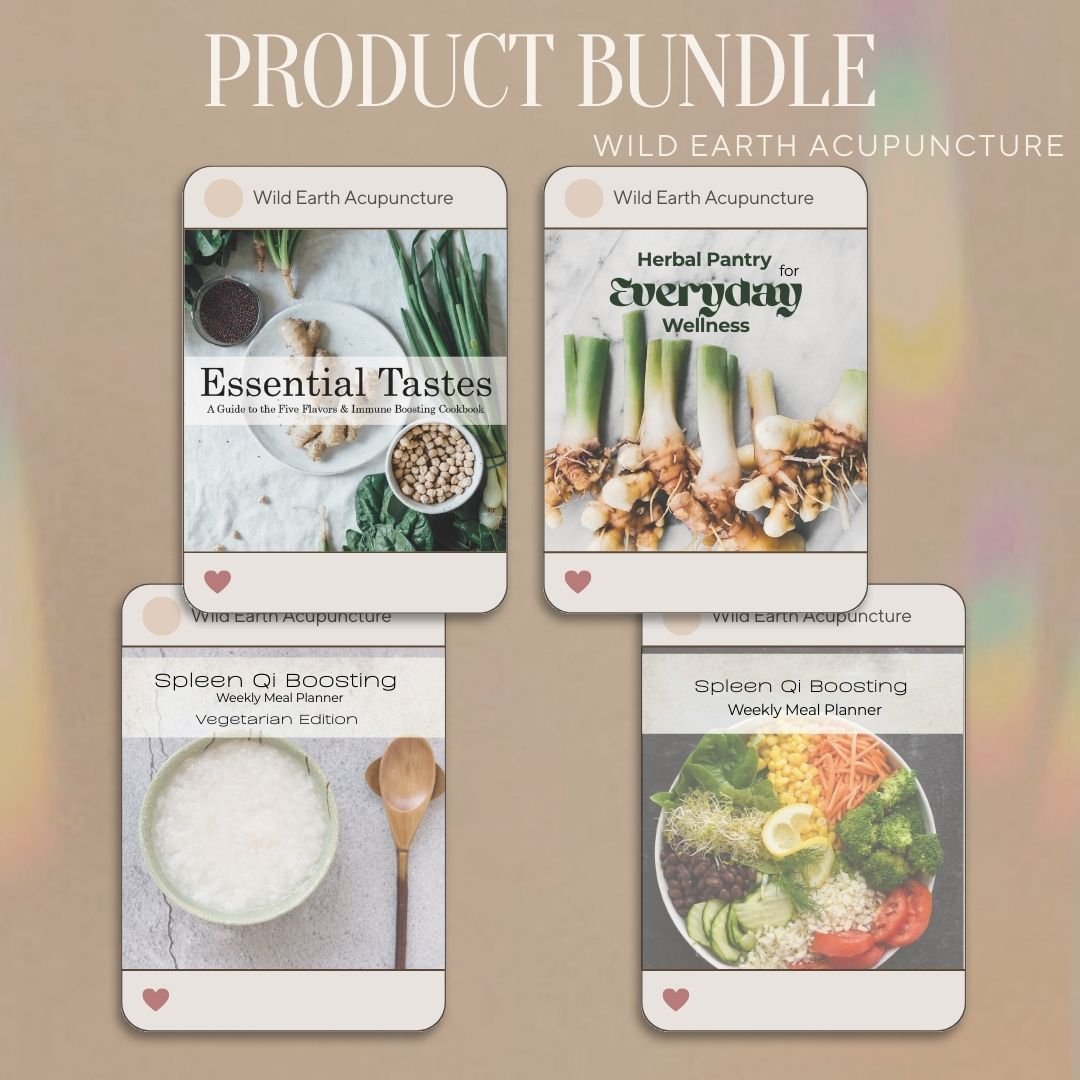Benefits of Foam Rolling and Uses for Stretching, Workouts, and Recovery
As an acupuncturist, I often remind my patients that healing doesn't stop when they leave the treatment room. What you do at home—especially when it comes to movement and recovery—matters deeply. One of my favorite tools to recommend is the foam roller. It’s affordable, accessible, and incredibly effective for enhancing mobility, relieving pain, and speeding up recovery.
What Is Foam Rolling?
Foam rolling is a form of self-myofascial release (SMR), a therapeutic technique used to relieve muscle tightness, reduce inflammation, and promote overall soft tissue health. The fascia—a web of connective tissue that surrounds muscles, bones, and organs—can become stiff or develop adhesions due to repetitive movements, poor posture, lack of mobility, or injury. These restrictions often contribute to discomfort, reduced flexibility, and chronic pain. Foam rolling uses your own body weight to apply slow, deliberate pressure to specific areas, targeting tight muscles and fascia. As you roll, the pressure helps break up adhesions, stimulate blood flow, and restore fluidity to the tissue, allowing for greater range of motion and faster recovery. It’s a simple, accessible method that can be done at home and is highly effective when used alongside other healing practices like acupuncture, stretching, or yoga.
The Benefits of Foam Rolling
Foam rolling offers a wide range of benefits, making it a versatile addition to your wellness routine:
1. Reduces Muscle Tension and Pain
Many of my patients come in with aches and tightness from long hours at a desk, stress, or intense workouts. Foam rolling helps ease that tension by increasing blood flow and releasing trigger points. It’s like giving yourself a mini massage—and it pairs beautifully with acupuncture treatments to extend the benefits at home.
2. Improves Flexibility and Range of Motion
Foam rolling before stretching or working out can help warm up muscles and prepare them for movement. After a workout, rolling supports recovery by reducing delayed onset muscle soreness (DOMS) and encouraging better flexibility over time.
3. Supports Circulation and Lymphatic Flow
In Traditional Chinese Medicine, we often talk about qi and blood stagnation contributing to pain and discomfort. Foam rolling stimulates blood and lymphatic flow, helping to move stuck energy and fluids—much like what acupuncture and cupping aim to do.
4. Enhances Recovery and Injury Prevention
Post-exercise foam rolling can help reduce soreness and accelerate recovery, allowing you to get back to your movement practice more quickly. Regular use may also prevent overuse injuries by keeping muscles supple and balanced.
Slow Rolling for Deep Release
While it may be tempting to roll quickly over tight areas, slow rolling offers a deeper, more therapeutic release. This intentional method involves moving at a controlled, steady pace—typically no faster than an inch per second—while maintaining awareness of how your body feels in each moment. When you encounter a tender or tight spot, pause and hold the pressure there for 20–30 seconds, allowing the tissue to soften and release with your breath.
As an acupuncturist, I view slow rolling as an extension of mindful bodywork. Just as we use acupuncture needles to gently signal the nervous system and stimulate the flow of qi, slow foam rolling encourages the body to relax its defenses and move out of the “fight-or-flight” response. When done with attention and calm breathing, it becomes not just physical therapy but a form of meditative self-care.
This technique is especially useful for areas that hold a lot of stress, such as the upper back, glutes, or IT bands. Slow rolling helps avoid unnecessary irritation that can come from aggressive or hurried movements. It teaches your body to trust the process of release and gives your nervous system the opportunity to reset.
Incorporating slow rolling into your evening routine—or even after acupuncture or stretching—can be a powerful way to wind down, reconnect with your body, and support long-term healing.
Foam Rolling as Part of Your Wellness Routine
Foam rolling is more than just a tool for athletes—it's a powerful practice for anyone seeking better movement, less pain, and deeper connection to their body. Whether you're recovering from a tough workout, sitting at a desk all day, or navigating the physical demands of parenting or aging, incorporating foam rolling into your daily or weekly routine can yield profound benefits.
I often remind patients that consistent self-care outside the clinic is key to lasting results. Foam rolling fits beautifully into a holistic wellness plan. It helps extend the benefits of acupuncture by continuing to move stagnant qi and blood, reduce tension, and support the health of muscles and fascia between treatments. When paired with stretching, breathwork, or gentle movement like yoga or walking, it enhances circulation, prevents injury, and improves body awareness.
You don’t need a lot of time—just 5 to 10 minutes a day can help release built-up stress in the body. Start with a few key areas like the calves, hamstrings, or upper back, and move slowly, focusing on your breath and how your body responds. Over time, you’ll likely notice not only less pain and stiffness, but a greater sense of ease in your daily movements.
Foam rolling empowers you to take an active role in your healing. It reconnects you to your body, increases resilience, and promotes longevity. It’s a beautiful complement to hands-on therapies like acupuncture—and one of the simplest ways to nourish your tissues, release stress, and feel better in your body every day.
SHOP THE STORY
By recognizing the manifestations of dampness, identifying its signs and symptoms, and incorporating dampness-clearing foods into your diet, you can work towards restoring balance and promoting overall well-being. This sticle will explain signs and symptoms of Dampness, and offer a few solutions.
Read on to learn the top 3 beauty “secrets” from Chinese Medicine.
This article explains the benefits of cosmetic acupuncture and what t o know if you are also engaging in other aesthetic procedures.
Learn more about the benefits of foam rolling for recovery and longevity.
This article explores the mind-body connection in Chinese Medicine, a concept known as the Shen. It helps explains the 5 aspects of the Shen and their links to Organ Systems and meridians.
This article explains the transformative power of the CHIRP Wheel, a unique spinal relief tool designed to prevent excess pressure on the spine while targeting muscles on both sides of your neck and back. It also offers simple steps for a safe and effective experience!
Learn about Kidney Yang Deficiency in Traditional Chinese Medicine, including signs, symptoms, food choices, and lifestyle tips to restore balance and vitality. Discover a warming recipe to support Kidney Yang health.
Discover how acupuncture can calm your mind, balance your body, and support lasting relief from anxiety. Learn what to expect in a session, how it works, and why more people are turning to this natural solution for modern-day stress.
Read along for some simple tips to align with the Springtime.
This article explains the Liver Organ System in Chinese Medicine.. and goes into detail about its functions and importance upon governing the smooth flow of Qi, and hence overall well-being.
This article explains the importance of the fascial network and ways to access it for better health.
This article explains how to perform moxa safely at home.
Intro to Red Light Therapy (RLT) and its benefits when used in conjunction with acupuncture.
Product Review of Dose for your Liver, a tasty herbal elixir.
Traveling the world with children is such a rewarding experience, albeit sometimes stressful. Being prepared with natural remedies and a proper first aid kit is essential!
In this article, we dive into the essence of the San Jiao and its significance as three distinct divisions, and one complete system, of the body.
This article explores what Chinese Medicine teaches us about aging gracefully, and the important role of food, herbs, and exercise in maintaining vitality and well-being as we age.
Spleen Qi Deficiency is a very common imbalance in Chinese Medicine. This article explains what that means, and what to do about it. It offers lifestyle suggestions as well as food choices, while giving an extensive overview of the theory attached from TCM.
The Stomach Bug can be quick and dirty. Here are some natural options to help soothe.
The Elimination diet is the “gold standard” when it comes to figuring out food sensitivities. This 3-5 week protocol can help you make individualized health choices to optimize your digestive function.
Looking for ways to incorporate herbs into your daily life? This article gives some of the most common, and delicious, food grade herbs to help improve your health and your cooking!
Discover how Traditional Chinese Medicine uses tongue diagnosis to reveal imbalances in Qi, Blood, and Organ health.
Cupping therapy is an amazing and feel-good modality that can help a wide variety of aliments. Read on to learn more.
The Large Intestine is an important Organ System of the Metal element in TCM. Read on to learn more about its significance and role in keeping you healthy and balanced.
This delicious snack is vegan, paleo, gluten-free, and AMAZING! It is very versatile and full of protein to keep you energized and feeling good! Check out this article for an easy recipe.
This simple receipe for nourishing chicken can easily become a staple in your household!
Fireside tonic has been used in natural medicine to help ward off colds and boost digestion. This article offers an east to follow recipe.
Quick pickles are some of my fav dishes- Heres an easy recipe for pickled Daikon Radish!
This simple tea recipe talks about the benefits of goji, da zao, and longan tea, with an easy delicious recipe for vitality and beauty!
This recipe is for turmeric paste, an amazing way to prepare turmeric to make easy and potent lattes, curries, herbal remedies.
This Refreshing Cucumber Salad with rice wine vinegar offers a perfect balance of tangy, sweet, and savory flavors, with a hint of sesame and garlic for a light yet flavorful side dish.
This recipe is for a quick pickled onion, which makes a delicious and healthy addition to many dishes.
Thie quick recipe makes a delightful gingery spinach side dish to accompany any meal.
🌿 Love What You See? Want It All? This bundle was made for you! 🌿
Get the ultimate herbal wellness collection in one beautifully curated package. This bundle includes:
✨ Essential Tastes Cookbook – Explore the Five Flavors of TCM through immune-boosting, nourishing recipes.
🥗 Spleen Qi Meal Planners – Two full weeks of meal plans (vegetarian and non-vegetarian) to support digestion and energy.
🫙 Herbal Pantry for Everyday Wellness – Learn the top 10 must-have herbs and exactly how to use them at home.
Whether you’re just starting your herbal journey or deepening your practice, this bundle gives you the tools to nourish your body, mind, and spirit—season by season, meal by meal.
✨ Save big and empower your kitchen with centuries of wisdom—naturally. ✨
$70 value for only $45!
Poor digestion got you down?
This weekly meal planner is focused on helping support your digestive system and boost your Spleen Qi.
7 days of meals, recipes and tips!
It comes designed in a PDF format for easy printing- so you can pop it on the fridge for inspiration, or take it to the market with you while you shop.
It comes stocked with:
🗓️ Easy-to-follow weekly meal planner with tasty suggestions for breakfast, lunch, dinner, and snacks each day of the week.
✔️ Grocery checklist
🌿 Helpful tips to help keep your tummy happy.
😋 Yummy recipes
This guide will get you off to the right start!
Check out the new Vegetarian Weekly Planner for another week of delicious recipes ( very easy to add some baked chicken or roasted salmon etc. to any of those recipes too!
🚨UPDATED WITH EVEN MORE DELICIOUS RECIPES!🚨
Prepare to embark on a transformative journey towards enhancing your fertility naturally with the nutritional outlook of Chinese Medicine. This book is the key to nurturing your body, and balancing your hormones.
🍲 Nutrient-rich recipes to nourish your body
🌱 Traditional Chinese Medicine wisdom for hormonal balance
💫 Tips to support your fertility journey
📖 Expert insights on holistic well-being
⭕️ Seed Cycling and more!
Incorporating herbal medicine into your routine doesn’t need to be complicated.
Start small.
Make a cup of tea. Stir herbs into your soup. Tune in to how you feel.
The beauty of herbal wellness lies in its simplicity and its ability to bring you back into relationship with nature, moment by moment.
Welcome to ✨ HERBAL PANTRY for EVERYDAY WELLNESS✨
This guide introduces the TOP 10 Herbs every budding herbalist needs in their pantry to help elevate your health!
Created by licensed acupuncturist and herbalist Lenore Cangeloso, this beautifully crafted ebook blends Traditional Chinese Medicine wisdom with modern, approachable recipes.
From calming teas to immune-boosting broths and beauty elixirs, you’ll learn how to bring the healing power of herbs into your daily life with ease and intention.
✨ Start your herbal journey today—naturally, simply, and rooted in tradition. ✨
Your Daily Dose of Herbal Concoctions
DRINK ME is your go-to guide for crafting nourishing, restorative, and delicious elixirs right from your kitchen.
🔥 Inside, You'll Discover:
✅ Easy-to-follow recipes for energy, immunity, digestion & relaxation
✅ The healing properties of herbs & how to combine them effectively
✅ Tips to make herbal infusions, decoctions, and tonics like a pro
💚 Whether you're a herbal enthusiast or just getting started, this ebook will help you create powerful, plant-based remedies to support your mind, body, and spirit.
📥 Grab your copy today and start sipping your way to wellness! 🥄🌸
👉 Download Now
Boost Your Spleen Qi with Ease!
This weekly meal planner is your ultimate guide to nourishing your body and supporting your Spleen Qi with wholesome, vegetarian meals.
✨ What’s Included:
A Full Week of Meals: Holistic recipes for breakfast, lunch, dinner, and a daily snack.
Easy-to-Use PDF Format: Perfect for printing to place on your fridge or take to the market.
Helpful Tips and Inspiration: Stay motivated with handy hints and guidance.
Delicious Recipes: Enjoy a variety of meals that are both nourishing and satisfying.
Transform your meals into tools for better health and vitality—all while keeping it simple and vegetarian-friendly. 🌱
Skin Deep Beauty- Get Glowing, Radiant Skin with Traditional Chinese Medicine
A step-by-step guide to level up your skincare.
—
⭐️ Packed with information to make natural and informed choices
⭐️ Guides to guasha and other amazing techniques
⭐️ Yummy recipes to get glowing from the inside out
⭐️Easy fun recipes for natural skin care
⭐️Afirmmations and more!
This easy-read handbook is a complete guide to dealing with “Liver Qi Stagnation”. It explains what Liver Qi stagnation is and offers various ways to help…
🍵Simple Dietary Advice
☺️Easy Lifestyle Changes
💜Nourishing Self-Care Routines
🏃♀️Gentle exercises
and
📖Delicious Recipes
A nutritional guide that leads you into the importance of the Five Flavors, from the lens of traditional Chinese Medicine. This book also offers a few great recipes to help incorporate this theory into your life and kitchen!
This guide offers:
🌿In-depth explanation of the Five Favors from a TCM perspective and how they impact physiology and digestion.
❣️ Basics of TCM theory and nutritional outlook
😋 Yummy recipes for each flavor profile
🍂 Seasonal Eating Tips
🧘 Mindfulness Prompts
Hardcopy available via Amazon.
Lenore Cangeloso is a Board Certified Acupuncturist, Clinical Herbalist and avid writer based in Southeast Portland.
























































These foundational books offer a clear and accessible path into the world of Acupuncture and Chinese Medicine. Whether you're studying to become a practitioner or simply curious about the theory behind the treatments, these titles will deepen your understanding and appreciation for this ancient healing system—one thoughtful page at a time.